Dick Cooper’s vision, with advice from the guru of Corti Brothers, launched Plymouth’s international wine phenomenon
By Scott Thomas Anderson
In the late 1970s, a young farming prodigy in the Shenandoah Valley was forging his own future: Dick Cooper’s parents had acquired a ranch along the valley’s grassy, golden quilt-work of hills, and though some of its158 acres were planted with prunes and walnuts, the recent U.C. Davis student had a different idea for the quiet patch of soil and sunlight.
Cooper wanted to follow the lead of his cousins up the road and install a serious vineyard. At first, his father wasn’t sure. It was a moment when some farmers were entrenched in the past, while others were gauging new possibilities for the valley. Cooper’s eyes were constantly looking ahead. He was part of a spirited generation of 30-something farmers in north Amador County who understood California’s vino scene might become ascendent, especially after one Napa County winery shocked the world in 1976 by crushing the French in a blind competition at the “Judgement of Paris.”
Cooper never stopped thinking of the potential, nor discussing it with his father. His persistence – along with an epiphany from a Sacramento wine savant – eventually opened the door to one of the region’s groundbreaking vineyards. Because Cooper didn’t just plant any grapes. He settled on a temperamental, highly obscure varietal from northern Italy. Over the next four decades, he did more than almost any figure to bring that little-known grape to the forefront of California’s legendary wine scene.
That varietal was Barbera.
Cooper passed away in early July at the age of 81. Now, some of the top winemakers in the Sierra foothills are looking back on how Cooper’s farming innovations, marketing savvy and dogged determination helped make Barbera a culinary sensation around the globe.
It’s why for the last 20 years Cooper was known near and far as “the Godfather of Barbera.”
The dinner conversation
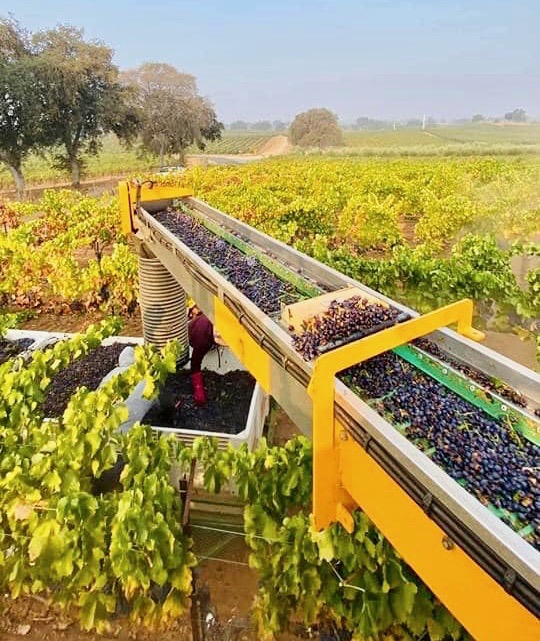
Piedmont, Italy, is a rolling vision of cream-colored towns, castles and monasteries nestled between the Alps and the blade of the Ligurian Sea. It’s famous for its hills and Mediterranean sun-splendor, but also for cultivating the unique wine grape known as Barbera.
While the vino has long been part of life there, it’s only one of eight varietals grown in the region. Barbera traditionally had to compete with Arnies and Dolcetto and for its place on Piedmont’s dinner tables. However, once it migrated to California’s Shenandoah Valley – a place of luminously dry landscapes, rows of cypress trees and long, red sunsets – its entire trajectory changed.
One of the first Barbera vintages bottled in the Shenandoah Valley came out of Montevina Winery in 1974. Award-winning vintner Scott Harvey was a 20 at the time and just breaking into the industry. He was on the field crew that picked the grapes for that first Barbera run. It was the same year Harvey met Dick Cooper. The two became lifelong friends.
Cooper had just moved home to Plymouth after studying agriculture at U.C. Davis. Having been taught before that in the Shenandoah Valley’s weathered, one-room school house, Cooper was establishing himself as a second-generation farmer, a well-known blacksmith and an expert welder who could solve any dilemma that came up on a farm or ranch. Harvey got to know Cooper during that pivotal time the young man was encouraging his father to unleash their family’s farming know-how on the wine business.
Harvey became close with Cooper’s parents, Hank and Ruth, who were beginning to warm to the idea of letting their talented son follow his instincts.
“Back then, the main form of entertainment, and social life, was going to other peoples’ houses for dinner,” Harvey recalled. “And the most coveted place to go was the Coopers’, because Ruth Cooper was an incredible cook.”
On one of those evenings Ruth was showcasing her skills, the family invited over Darrell Corti, whose father and uncle had founded Corit Brothers Market in Sacramento 30 years before. Darrell Corti had – and still has – one of the most influential wine palates in northern California. It’s a gift that has been recognized by chefs as famous as Jeremey Tower, one of the founders of the nation’s farm to fork movement.
“During that dinner, Hank asked Darrell, ‘Well, if we’re going to plant grapes, what varietal should we go with?’” Harvey remembered. “Darrell told him, ‘Barbera and Dolcetto.’ Hank had never even heard of either. He asked Darrell how to spell them. Darrell pulled a dollar bill out of his wallet and spelled-out Barbera and Dolcetto on it with a pen, and then he handed it over.”
To this day, that dollar bill, now framed, is on display in the tasting room of Cooper Vineyards.
Dick Cooper took the initiative to get the vineyard going on the family’s second piece of property, known around the valley as the old Ball Ranch. He couldn’t find any cuttings of Dolcetto to plant, but was able to get cuttings of Barbera from Gary Gott at Montevina. Cooper started off by planting five acres of the grape.
In the early days, since most in California’s food scene hadn’t heard of Barbera, Cooper did not find a huge market.
“It got to the point where it was being used primarily to blend, mostly in White Zinfandel, even though you’re not supposed to do that,” he recounted in a 2015 interview.
‘It just explodes’
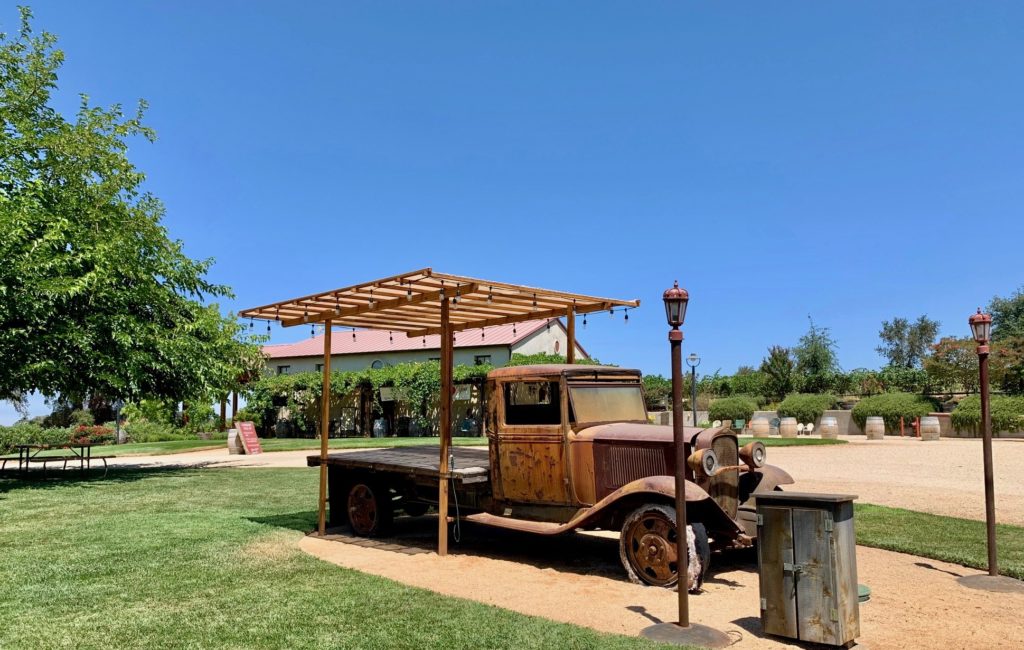
By the early 1980s, Harvey was the head winemaker at Santino’s in Plymouth, which is today’s Rombauer’s Winery. Harvey started making a pure Barbera using grapes from Cooper’s vineyard. Those efforts quickly won awards and stood out in regional wine competitions.
Another pioneering vintner in the valley, Bill Easton, also took a chance on what Cooper was growing.
“We got the character in the wine that we were looking for from the Cooper grapes,” Easton said. “We were, and are, making a more powerful, oak-aged Barbera, like a Barbera d’Alba. Cooper’s Barbera had the intensity and character for us to achieve our aesthetic goal.”
After winemaker Jeff Runquist also started finding success with Cooper’s crops, it was clear that Barbera – with its crimson darkness, deep berry intensity and aromatic reflections – held exciting possibilities for California’s wine landscape.
Harvey eventually became convinced that the Shenandoah Valley is the best spot in the world for growing Barbera – even better than the grape’s original home of Piedmont.
“What the Amador foothills and Piedmont have in common is that both are up against young, fast-growing mountain ranges with decomposed granite soils coming sides,” Harvey explained. “But Piedmont is near the sea, with lots of fog rolling into the vineyards during the growing season. Barbera is a sun-loving varietal, not a fog-loving varietal, and in Piedmont, it doesn’t get the best vineyard sites.”
He added, “It just explodes in Amador County. Here, it produces that fresh fruit character, and the naturally high acidity in it is really highlighted so well.”
Yet Barbera is not the easiest grape to grow. In some respects, it’s downright volatile. Cooper was the green-thumb who gradually mastered how to do it.
“You need to leave more spurs per-vine on Barbera to get a little more shade,” Cooper once told culinary blogger Randy Caparoso. “And you learn to drop seconds (or ‘late blooming clusters’). Barbera likes a little sun after veraison (meaning when the berries turn from green to black), but before veraison, it’s a disaster. It’s also susceptible to powdery mildew, so you have to be vigilant with the sprays.”
Easton, now a multi-award-winning winemaker and veteran grape-grower, says he was constantly impressed by Cooper’s problem-solving abilities during the four decades they were friends.
“Dick was just a fount of knowledge when it came to farming and ranching,” Easton stressed. “I think he’d made a real commitment to Barbera by 2000. He was the one who really pushed it, and probably had more acres of it than anyone.”
For insiders, Barbera’s reputation was soaring; but Cooper knew that he and his fellow growers had to get the word out to a wider audience. They organized a big sheep barbecue at the local fairgrounds, where succulent smoked lamb was served with rosemary, onions, cheese – and wine from the Shenandoah Valley. Cooper invited members of Sacramento media to this fun, downhome food-pairing. One of Cooper’s four daughters, Chrissy Cooper Cheetham, remembers being recruited to serve dishes at the barbecue as a kid.
“No one in the area had imagined wine events like that before,” Cheetham observed. “Dad had spent about five years planning out his own winery, prior to opening Cooper Vineyards in 2004. He thought it would be good for our family to have its own winery in concert with our vineyards, and that it was something that would bring everything full circle.”
Blazing a new trail, and ‘the Godfather’ gets his name
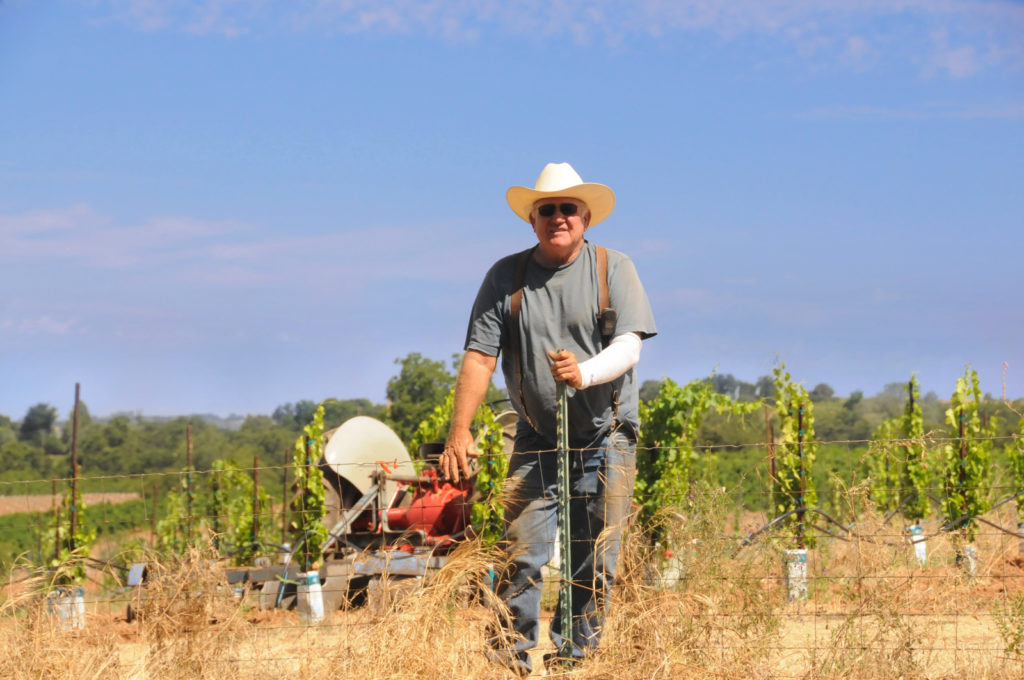
Today, Cooper Vineyards has vines sweeping across 90 acres of its homestead. Much of that’s Barbera, though Cooper also aimed his farming skills at Mourvedre, Charbono and Alicante Bouschet. Since the day Cooper’s own tasting room opened, his winemaker has been Mike Roser, an artisan with a gift for accentuating the specific, natural characters of each grape varietal he works with. That’s paid off in awards, media recognition and a growing fanbase, especially when it comes to the arcane grape that Cooper initially put his faith in.
As of this year, Cooper Vineyards is still producing some of the most sensational Barbera in the state. The winery is currently on its third bottling of a large 2018 yield of Barbera, and the wine being poured from it was aged in oak barrels for over 28 months. It has a luscious breath of blueberry, strengthened by earthy custard notes and phantom touches of red chilis and tannic coco textures. For genuine Barbera fans, the adjective one might use is, perfect.
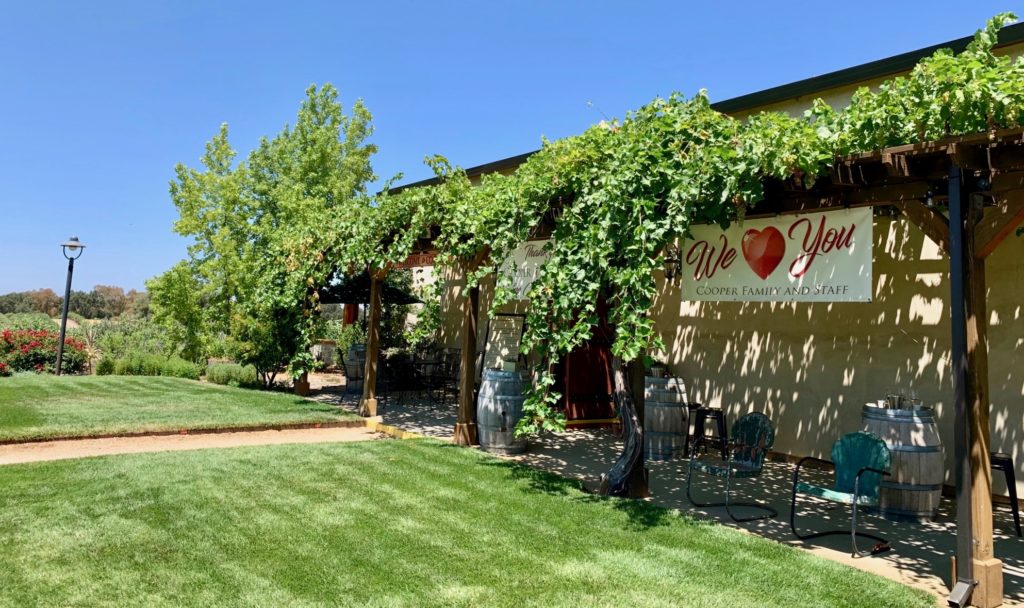
The Shenandoah Valley’s winemakers eventually decided to launch an annual international Barbera Festival. There was little question about whose winery the maiden voyage should be held at in 2011. People arriving could get a sense of the man behind the grape: Cooper loved collecting and restoring antique vehicles, some of which are artfully positioned around his farm and tasting room. For years, Cooper sang and played guitar in a country and classic rock band at the Plymouth Hotel, offering a window into how faded blue jeans and weathered ball caps were welcomed at the valley’s wine releases alongside visitors in designer clothes climbing out of stretch limos. Attendees at the Barbera Festival could see those same sensibilities reflected in Cooper’s rustically elegant tasting room.
The Barbera Festival soon became one of Northern California’s premier wine events, consistently selling out year after year. It became such a hit, in fact, that crowd sizes outgrew Cooper Vineyards. The event is now held at Terra d’Oro Winery, formerly Montevina, where the valley’s first Barbera was bottled.
No one remembers exactly when California wine fanatics and industry insiders began calling Cooper “the Godfather of Barbera,” but the moniker stuck. By the time he passed away, there were few connoisseurs and tasting room groupies in the state who hadn’t heard of him. But for Plymouth’s winemakers and growers, the real story of Dick Cooper is one proven farming prowess and extreme generosity.
Jim Spinetta, whose family owns Charles Spinetta Winery, was encouraged by Cooper to take his place as president of the Farm Bureau. The Spinettas have been growing Cooper’s Cone 3 Barbera grape in their vineyards for more than 35 years. Though the family’s been farming and ranching in the Shenandoah Valley since 1852, Mike says that he and every other vintner learned from Cooper’s techniques.
“He actually wrote a ‘Dick Cooper farming manual’ about everything from the vine to the branch,” Spinetta said. “It covered soil, spacing, calibrating tractors, mowing vineyards, selecting grapes, handling root stock. Almost anything you could think of.”
He added that Cooper had a particular interest in advancing sustainable farming practices that were compatible with wildlife.
“That’s what he taught us – he laid a foundation,” Spinetta reflected. “He’ll be remembered for that, for Barbera, and for all his kindness to other people.”
Easton agrees.
“Dick was all about community,” he noted. “When other growers ran into problems, they could go to him, because he had that high mechanical aptitude; and he always made time to help.”
For Harvey, who along with Cooper, Easton, Charles Spinetta, Ken Deaver and a handful of others, pushed the Shenandoah Valley towards greatness, says his longtime friend’s attitude and approach were foundational.
“Dick believed that a rising tide would help the whole region, and he didn’t believe in competing with his neighbors,” Harvey said. “He was a real builder of the whole valley, which is why he’s so respected here to this very day.”
Scott Thomas Anderson is also the host of the ‘Drinkers with Writing Problems’ podcast.
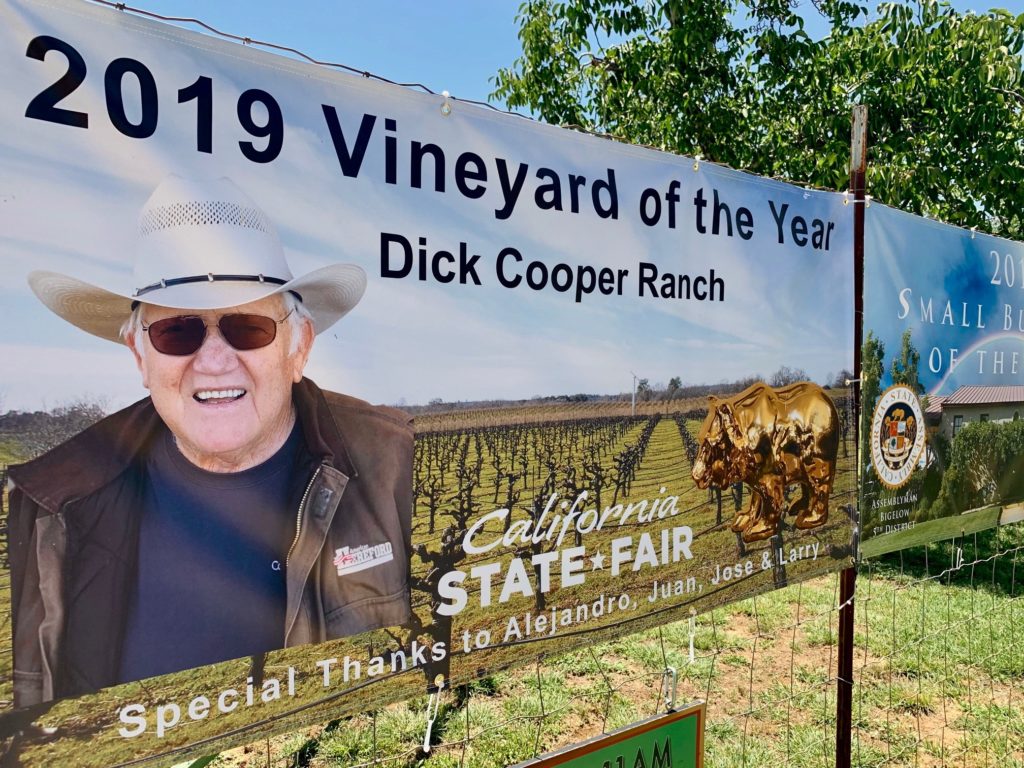


One of the neaatest guys you could ever meet. We will miss him.
What a lovely tribute to a great man. He treated everyone fairly and knew how to grow, nurture and craft that big Barbera! I am glad to have known him! My condolences to family and friends.
Such a beautiful article that truly captures Dick Cooper’s incredibly generous and community driven purpose. It was a privilege knowing such a Sweetheart of a man.